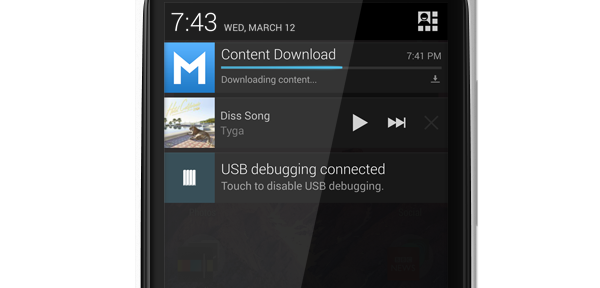The mobile app ecosystem is still new – a fact that’s easy to forget until you remember that there are things that we take for granted on desktop that just don’t exist in apps.
Deep linking is one of these things. Its spread and adoption is one of the factors involved in the app becoming more like the rest of the internet.
WHAT IS DEEP LINKING, ANYWAY?
Deep linking is a link to a part of a site or app that is somewhere on the inside – if we think of the main page or launch screen as the front door, then this is a link to the living room. It’s a simple concept and one that we are so accustomed to on the internet that we may not know what it’s called.
A link to this article is a deep link, while a link to mobileroadie.com isn’t.
Nothing special, right?
Most links you see are deep links, but that’s usually on desktop. Web pages have the advantage of all being written in the same language – HTML. That means that links everywhere have the same format and are easily standardized. In apps there are different operating systems and programming languages at play.
Overcoming this problem means an incredible amount of functionality is opened to the app ecosystem.
WHY IS DEEP LINKING IMPORTANT FOR MOBILE?
As with most things we take for granted, we may not realize what deep linking enables.
Social sharing relies on deep linking. Imagine if you couldn’t share a specific article on Facebook – you’d share the site and a detailed set of instructions on how to navigate to the article that you wanted to let people know about. That’s annoying even if there are only three pages on the site, but what if there are 300?
Search engines also rely on deep links. They go through websites and deliver relevant pieces of content – specific answers to search queries, not websites that might have content that might interest the searcher.
Deep links create a system of apps that works like the desktop web. An app is no longer an isolated program. Instead, there’s an environment of programs that talk to each other, broadening the utility of the entire network.
HOW IS DEEP LINKING USED NOW?
Mobile deep linking is mostly used for marketing. If you have a mobile store, it’s valuable to be able to bring a potential customer to a transactional page where they can buy rather than a storefront.
Ease of use is central to a good user experience, which leads to better results. People who have an easy time buying things tend to buy more things and be happier once they do. If you see an ad with a pair of shoes that you want, clicking it should get you to a page where you can buy that pair of shoes. For e-commerce, the utility is clear. But what about other apps?
Deep linking simplifies promotions across the board. Taking new users directly to a particular screen can make their experience more relevant and interesting. From sharing (via text message or email) to paid promotions, you have a greater variety of screens that they can land on.
If you plan events, spread information about your company’s promotions, or just want to share one piece of news, a deep link is the simplest way to do it from an app.
The largest marketing platforms (Google, Facebook, Twitter, etc.) were among the first to adopt deep linking. 2012 marked the Google+ app adopting deep links to content. Other marketers were quick to follow, and for good reason.
If you have direct transactions in your app, then deep linking is a boon. However, regular links to download your app are still useful. Getting people to become regular users is invaluable. After downloads, you can make use of push notifications to drive use as part of a broad strategy for engagement.
WHAT IS THE FUTURE OF DEEP LINKING?
If you remember what the early internet was like, you may understand what deep linking can do for mobile.
The web was dominated by large sites that tried to be universal – Yahoo may be the only (barely) surviving one. They gathered an audience and then tended to stagnate, resting on their laurels because users couldn’t find alternatives. The current app market is similar.
Once deep linking on apps becomes as easy as it is on the desktop internet, this will change. With stable ways of finding content, you’ll be able to search apps and find specific functions or pieces of content. It will make it easier to find and be found.
What do you think mobile deep linking will lead to? Let us know in the comments.



